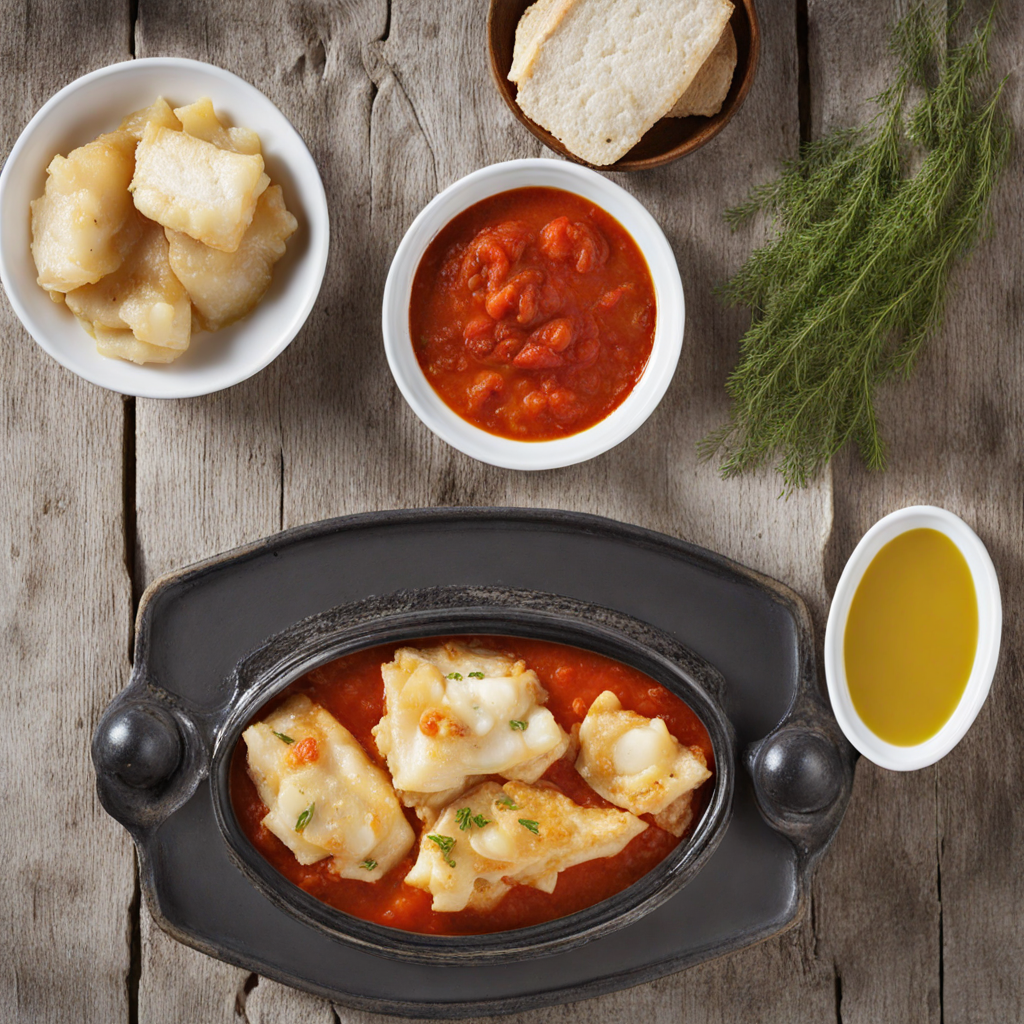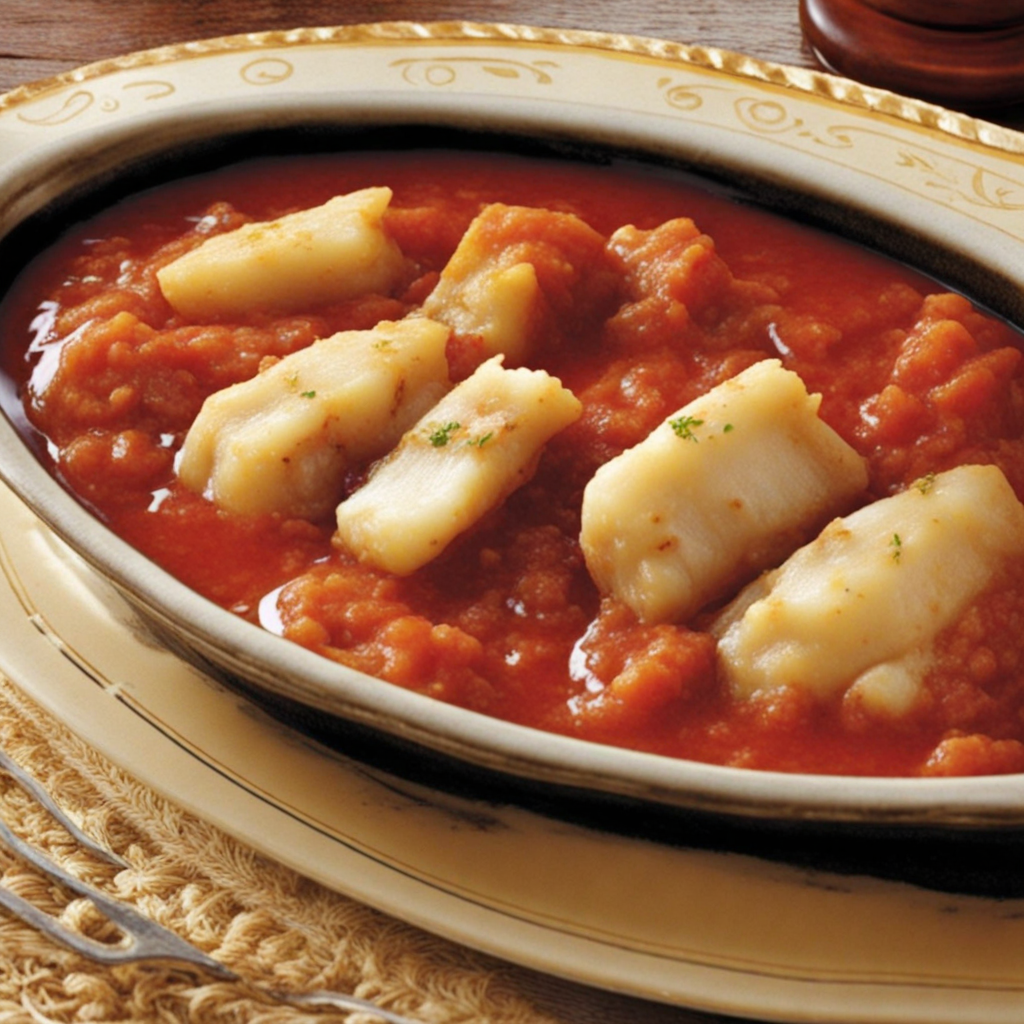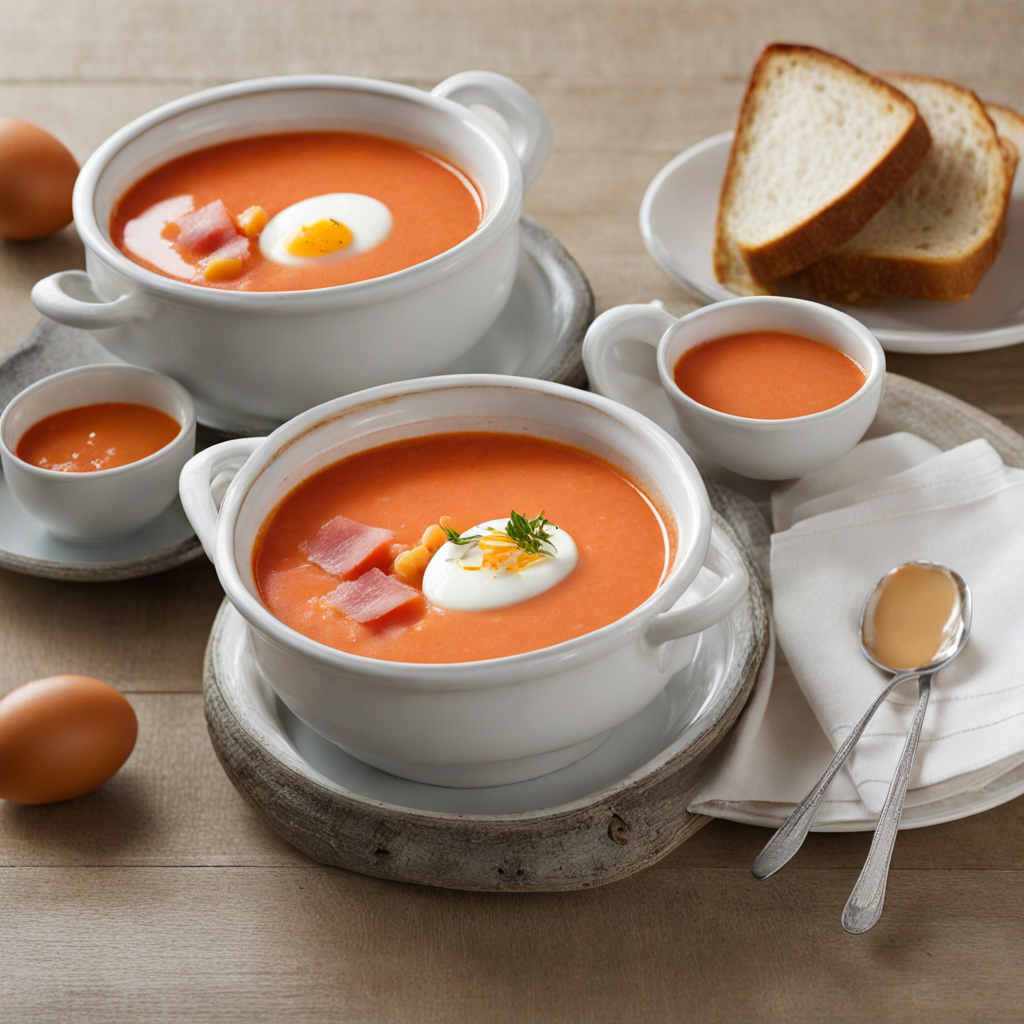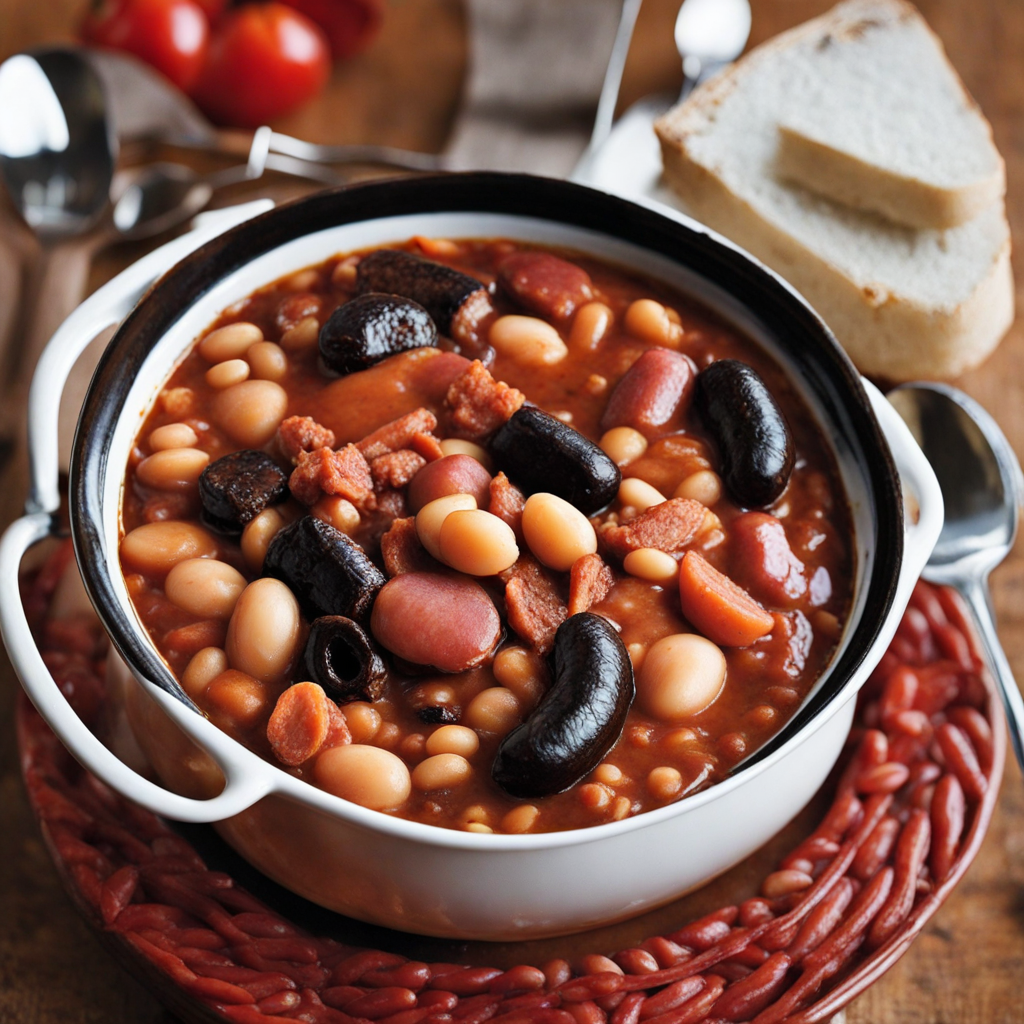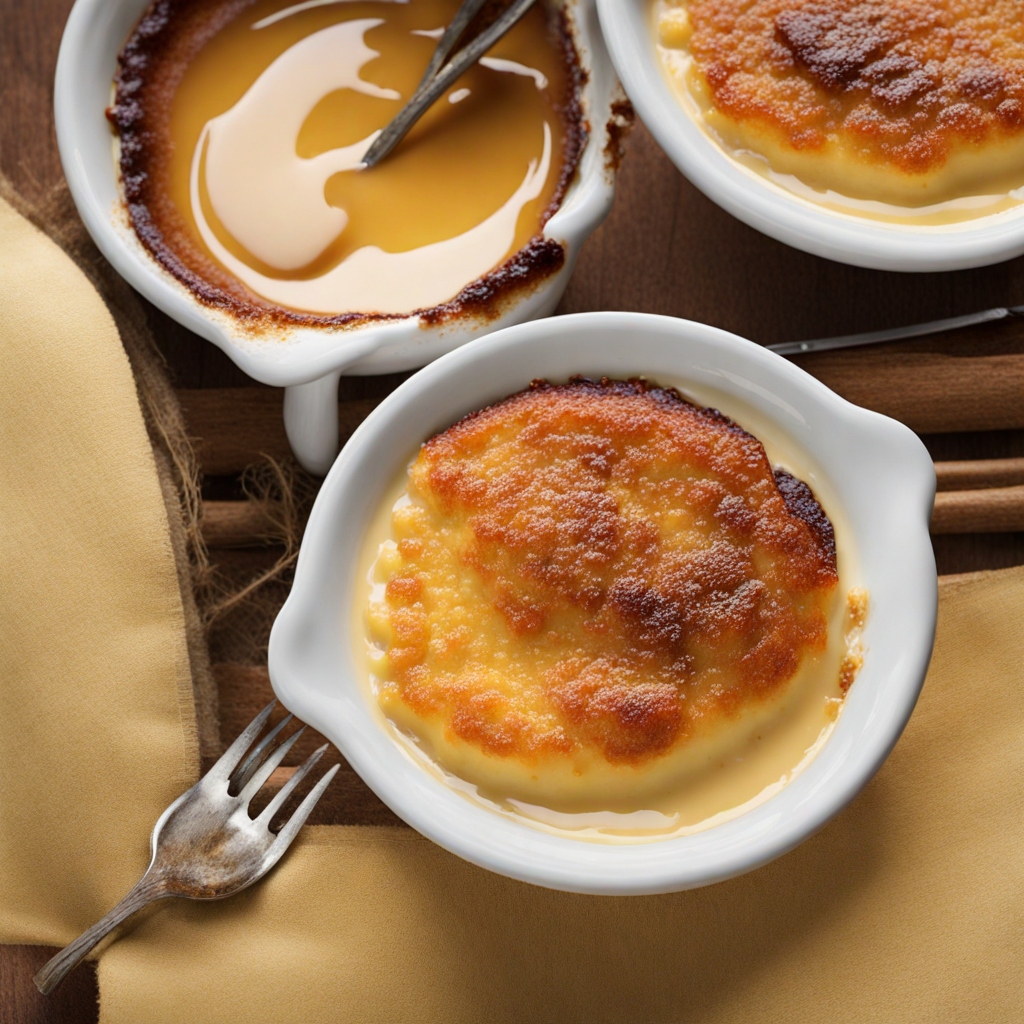Bacalao
Bacalao, or salted cod, is a beloved culinary staple in Spain, celebrated for its unique flavor and versatility in various dishes. The process of salting and drying the fish preserves it, giving it a distinct, intense taste that deepens when rehydrated. The flesh becomes flaky and tender, absorbing the flavors of the ingredients it's cooked with, making it a perfect canvas for a myriad of preparations. Traditionally, bacalao is often found in classic Spanish recipes, lending itself beautifully to stews, casseroles, and even tapas, where it can shine as the star ingredient or complement others.
How It Became This Dish
The History of Bacalao: A Culinary Treasure of Spain Bacalao, or salted cod, is a cornerstone of Spanish cuisine, steeped in rich history and cultural significance that spans centuries. This humble fish has made its mark not only on the tables of Spain but also across the globe, reflecting the complex interplay of trade, religious practices, and culinary innovation. #### Origins: The Birth of Bacalao The origins of bacalao can be traced back to the North Atlantic, where codfish thrived in the cold, nutrient-rich waters. Indigenous peoples of the Americas were among the first to recognize the value of cod, but it was the European fishermen in the 15th century who truly began to exploit this resource. As the Age of Exploration unfolded, particularly with the voyages of Christopher Columbus, cod became a staple for sailors on long journeys. Its long shelf life—thanks to the salting and drying process—made it an ideal food for the high seas. Spain's involvement with bacalao started in earnest when Basque fishermen ventured to the Grand Banks off the coast of Newfoundland, Canada, in the late 15th century. The Basques developed a method of preserving cod by salting and drying it, which allowed them to transport the fish back to Europe. This practice laid the groundwork for bacalao’s enduring presence in Spanish kitchens. #### Cultural Significance: A Religious and Social Staple Bacalao holds considerable cultural significance in Spain, particularly in relation to religious traditions. The Catholic Church mandated fasting and abstinence from meat on Fridays and during Lent, leading to a surge in the consumption of fish, especially bacalao. This practice became deeply ingrained in Spanish culture, resulting in numerous recipes that showcased the versatility of the fish. The cultural importance of bacalao is also reflected in regional festivals and culinary events. In cities like Valencia and Seville, bacalao is often featured in traditional dishes served during Holy Week (Semana Santa), where families come together to break bread and share meals that honor their faith. The dish "bacalao a la vizcaína," for instance, is a celebrated recipe from the Basque Country, prepared with a rich sauce of tomatoes, red peppers, and onions. #### Development Over Time: A Culinary Evolution As bacalao spread throughout Spain and beyond, it underwent various transformations that highlighted regional flavors and techniques. In the 18th and 19th centuries, Spanish colonialism and trade routes helped to expand the fish's reach. Bacalao became a staple in various former colonies, including parts of Latin America, where it adapted to local cuisines. In the Caribbean, for instance, bacalao is often paired with ingredients like olives and capers, reflecting Mediterranean influences. In Mexico, the dish “bacalao a la vizcaína” was reinterpreted with local spices and ingredients, such as chiles and tomatoes, creating a unique fusion of flavors. Back in Spain, regional variations began to emerge. In Galicia, bacalao is often prepared with potatoes and served in a stew known as "bacalao con tomate," demonstrating the influence of local agricultural products. In Andalusia, you might find "bacalao dorado," a dish that features shredded salted cod pan-fried with onions and potatoes, showcasing the region's penchant for fried foods. #### The Modern Era: Bacalao Today In the 20th century, bacalao continued to evolve as culinary trends shifted and globalization took hold. The advent of modern preservation techniques and refrigeration has made fresh cod more accessible, but the tradition of bacalao remains strong. Chefs and home cooks alike continue to embrace the art of preparing bacalao, blending traditional methods with contemporary culinary practices. Today, bacalao is celebrated not only for its historical significance but also for its versatility and flavor. It can be found in a variety of dishes, from tapas to main courses, and is often paired with seasonal vegetables, legumes, and spices. The dish "bacalao al pil-pil," a Basque preparation featuring a sauce made from the emulsified oil of the fish, is a prime example of how bacalao can be elevated to fine dining. Bacalao also plays a role in Spain’s contemporary culinary scene, where chefs are increasingly interested in sustainability and the use of traditional ingredients. As awareness grows about the importance of preserving culinary heritage, bacalao remains a symbol of cultural identity and gastronomic pride. #### Conclusion: Bacalao as a Symbol of Spanish Identity Bacalao is more than just a beloved ingredient in Spanish cuisine; it is a symbol of the country’s rich maritime history, religious traditions, and culinary innovation. Its journey from the cold waters of the Atlantic to the tables of Spanish families is a testament to the resilience of culture and the importance of food in forging connections across generations. As Spain continues to navigate a rapidly changing culinary landscape, bacalao endures, reminding us of the power of food to tell stories, celebrate heritage, and bring people together. Whether enjoyed in a traditional dish or reimagined by a modern chef, bacalao remains a cherished ingredient that embodies the soul of Spanish cuisine. In every bite, one can taste the history, the culture, and the enduring legacy of this remarkable fish.
You may like
Discover local flavors from Spain


